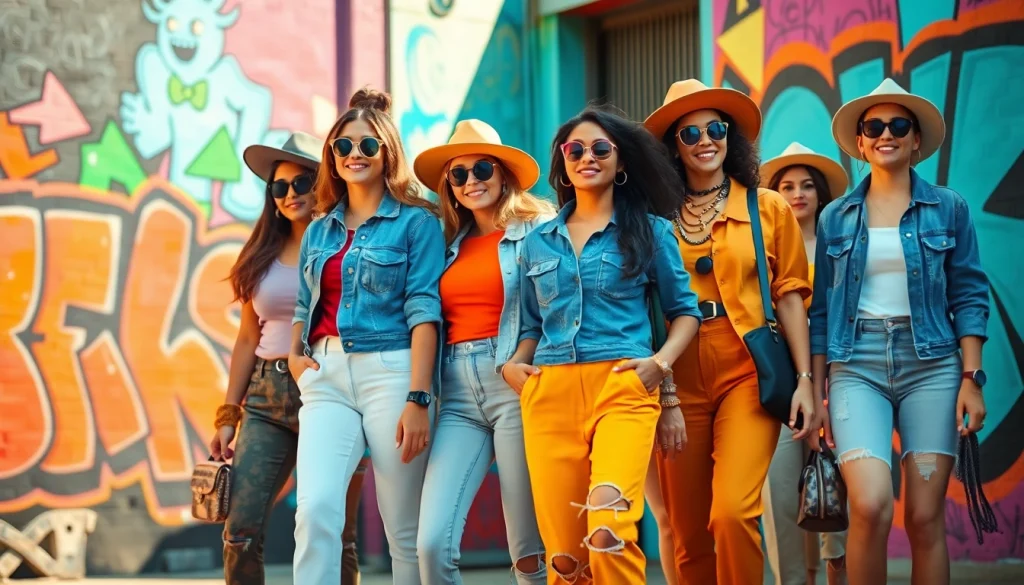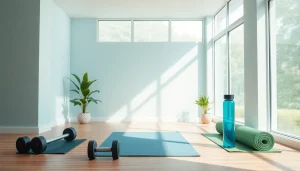Understanding Women Fashion: Trends and Styles
The realm of Women Fashion is a vibrant tapestry woven through time, culture, and personal expression. It’s an avenue through which women can demonstrate individuality, societal influences, and creativity. Understanding women’s fashion requires delving into various elements such as historical evolution, current trends, and essential wardrobe pieces that every woman should consider. This exploration not only enhances personal style but also informs smart purchasing for those keen on building a versatile wardrobe.
The Evolution of Women Fashion Over the Years
Women’s fashion has undergone a significant metamorphosis over the decades. In the early 1900s, women’s clothing was heavily influenced by Victorian values, with corsetted dresses and floor-length skirts dominating wardrobes. However, the following decades ushered in remarkable changes.
The Roaring Twenties revolutionized fashion with flapper dresses, representing freedom and the breaking of societal norms. The post-World War II era introduced more structured silhouettes with classic pieces like the “New Look” designed by Christian Dior, emphasizing femininity.
As we transitioned into the late 20th century, styles varied drastically – from the bohemian vibes of the 1960s, where mini skirts were a bold statement, to the power dressing of the 1980s. Today, fashion has become more inclusive and diverse, with various styles representing cultural influences, innovations in textiles, and technological advancements.
Current Trends Influencing Women’s Clothing Choices
Today, women’s fashion is vibrant and eclectic, reflecting personal identity and global trends. Current trends include:
- Sustainable Fashion: With the rise in environmental consciousness, brands promoting eco-friendly materials are gaining traction.
- Gender Fluidity: The definition of women’s clothing is expanding to include unisex and gender-neutral styles, allowing for greater expression.
- Streetwear Influence: Casual, sporty aesthetics are being embraced in both everyday wear and high-end collections.
- Vintage Revival: Nostalgic pieces from previous decades, especially the 90s and early 2000s, are making a significant comeback.
These trends showcase a blend of comfort, individuality, and historical influences, marking a significant shift in how women curate their wardrobes.
Essential Pieces Every Woman Should Have
A well-rounded wardrobe starts with a few key pieces that offer versatility and style:
- Classic White Shirt: A staple that can be dressed up or down for any occasion.
- Little Black Dress (LBD): Perfect for various events, the LBD remains timeless.
- Tailored Blazer: Adds sophistication to any casual outfit and can transition from work to evening wear.
- High-Quality Jeans: A good pair of jeans provides comfort and can be styled in countless ways.
- Versatile Footwear: An assortment of shoes, from sneakers to heels, provides the foundation for every woman’s footwear collection.
Investing in quality over quantity ensures that these essentials will last and remain stylish through changing trends.
Exploring Sustainable Women Fashion
In recent years, sustainability has become a cornerstone of the fashion industry, especially in women’s fashion. As awareness of environmental issues grows, many consumers are shifting their buying habits toward brands that prioritize eco-friendly practices.
Why Sustainability Matters in Women Fashion
The fashion industry is one of the largest polluters in the world, often associated with exploitative labor practices and significant resource consumption. Women’s fashion is particularly impacted by fast fashion trends that prioritize cheap production over ethical standards. Sustainability matters because it promotes:
- Reduced Environmental Impact: Sustainable fashion practices minimize waste and pollution.
- Ethical Labor Practices: Many sustainable brands ensure fair wages and safe working conditions.
- Resource Conservation: Eco-friendly materials reduce the depletion of finite resources.
By choosing sustainable brands, consumers participate in a positive cycle that supports ethical practices within the industry.
Brands Leading the Way in Eco-Friendly Practices
Several brands have dedicated their mission to sustainable practices, revolutionizing the way women shop for clothing. Noteworthy brands include:
- Reformation: Known for its trendy pieces made from eco-friendly materials, this brand actively works to reduce its carbon footprint.
- Everlane: Committed to transparency, Everlane provides insight into the true cost of their garments while focusing on sustainable production.
- Patagonia: This outdoor brand focuses not only on sustainable materials but also on activism regarding environmental issues.
- Girlfriend Collective: With a commitment to using recycled materials, Girlfriend Collective creates stylish activewear that champions inclusivity.
These brands exemplify how fashion can blend style with responsibility, leading consumers toward more thoughtful purchasing habits.
How to Build a Sustainable Wardrobe
Transitioning to a sustainable wardrobe may seem daunting but can be an enriching process. Here’s how to get started:
- Assess Your Current Wardrobe: Identify pieces you wear regularly and those you don’t. Remove items that no longer serve you.
- Invest in Quality Over Quantity: Prioritize a few high-quality pieces over a closet filled with fast fashion.
- Research Brands: Look for brands that align with your values regarding sustainability and ethics.
- Practice Mindful Shopping: Before making a purchase, consider the necessity and longevity of the piece.
- Care for Your Clothes: Proper maintenance can extend the lifespan of your garments, reducing waste.
Building a sustainable wardrobe is not just about the clothing; it’s about changing the mindset towards more ethical consumption.
Accessorizing Women Fashion: Elevate Your Style
Accessories can significantly influence the overall impact of an outfit, serving as vital elements that complete your look. The right accessories can transform a simple outfit into a statement.
The Role of Accessories in Women Fashion
Accessories encompass more than just jewelry; they include bags, scarves, hats, shoes, and even eyewear. Each accessory serves functional and aesthetic purposes:
- Personalization: Accessories allow individuals to express their unique style and personality.
- Versatility: The same outfit can appear different when paired with varied accessories, enhancing versatility.
- Focus Points: Accessories can draw attention to specific aspects of an outfit, enhancing its visual appeal.
By carefully selecting accessories, women can showcase their creativity and enhance their overall style effortlessly.
Must-Have Accessories for Every Occasion
To build a comprehensive accessory collection, consider the following must-haves:
- Statement Jewelry: A bold necklace or earrings can elevate any outfit.
- Stylish Handbag: A versatile handbag can function as both a fashion statement and a practical item.
- Scarves: Perfect for adding a pop of color, scarves can be worn in various ways, adding warmth or style.
- Sunglasses: A stylish pair of sunglasses not only protects your eyes but also adds flair to outfits.
- Belts: Used for practicality or style, a well-chosen belt can define your waist and complete a look.
Each accessory has the power to enhance or completely transform an outfit, making them valuable additions to any wardrobe.
Balancing Accessories with Your Outfit
While accessorizing can enhance style, balance is crucial; too many accessories can overwhelm an outfit. Here are tips for effective accessorizing:
- Choose a Focal Point: If your outfit is busy, opt for minimal accessories. Conversely, a simple outfit can support bolder accessories.
- Color Coordination: Ensure that your accessories complement your outfit’s colors without clashing.
- Mixing Textures: Combine different textures thoughtfully to add depth to your look; for example, pairing leather with silk.
- Scale Matters: Consider the proportions of your accessories relative to your outfit to maintain a balanced look.
By observing these principles, women can master the art of accessorizing without overdoing it, creating cohesive outfits that reflect their unique style.
Women Fashion and Personal Branding
Fashion is not just about clothing; it’s an extension of one’s identity and a tool for personal branding. How women present themselves through their fashion choices can significantly impact their professional image and personal confidence.
Creating Your Unique Fashion Identity
Creating a fashion identity involves understanding your style preferences, lifestyle needs, and personal aesthetics. Here are steps to help you define your fashion identity:
- Reflect on Your Style: Consider what styles resonate with you and how they align with your lifestyle.
- Inspiration Sources: Explore fashion blogs, social media, and magazines to gather inspiration.
- Experimentation: Step out of your comfort zone and try new styles, textures, and colors.
- Consistency: Develop a consistent theme that expresses who you are as a person.
By crafting your fashion identity, you aid in expressing your individuality and embracing your persona.
How Fashion Choices Impact Your Professional Image
Fashion choices directly influence how individuals are perceived in professional settings. An appropriate attire can convey trustworthiness, professionalism, and competence. Important considerations include:
- Dress for the Role: Understand the company’s culture and dress accordingly.
- Quality and Fit: Wearing well-fitted clothing in good condition reflects self-respect and attention to detail.
- Appropriate Colors: Different colors elicit varied perceptions; for example, blue communicates trust, while red signifies confidence.
Consciously selecting outfits for professional settings can lead to more favorable perceptions and potential career advancements.
Building Confidence Through Women Fashion
Fashion can significantly impact self-esteem and confidence. Here are strategies for utilizing fashion to boost confidence:
- Wear What Makes You Feel Good: Choose pieces that resonate with your personality and enhance your body image.
- Practice Positive Affirmations: Wear outfits that remind you of your strengths and capabilities.
- Investment in Quality: Quality clothing can create a better physical fit, leading to increased self-assuredness.
- Develop a Signature Style: A consistent style that feels uniquely you can project confidence to others.
Fashion serves as a powerful tool for self-expression, enabling women to build and project confidence in varying environments.
Future Trends in Women Fashion: What to Expect
As the fashion industry continues to evolve, staying informed about emerging trends can help women make more insightful purchasing decisions. Below, we discuss potential future trends in women’s fashion.
Forecasting Women Fashion Trends for 2025
As we look ahead, there are several key trends likely to dominate women’s fashion by 2025, such as:
- Remote Work Aesthetics: With the increase in telecommuting, comfortable yet chic loungewear and office-friendly stylish pieces will gain popularity.
- Smart Textiles: Technology in clothing will rise, with garments equipped with functionalities such as temperature control and health monitors.
- Inclusivity in Sizing: An increase in brands offering a broader range of sizes, catering to a diverse array of body types.
The trends give an exciting glimpse into how fashion will cater to functionality while remaining stylish.
The Impact of Technology on Women Fashion
Technology continues to shape the fashion landscape. Innovations you can expect to see include:
- Augmented Reality (AR) for Shopping: AR will enhance online shopping experiences, allowing consumers to virtually try on clothes before purchasing.
- Sustainability through Tech: Technology will enable brands to create more sustainable practices through efficient resource management.
- Digital Fashion Shows: Expect an increase in virtual fashion events that focus on accessibility and global viewership.
These technological advancements will continue reshaping the shopping experience, making it more interactive and personalized.
How to Stay Ahead in Women Fashion Trends
To stay current with trends and innovations in women’s fashion:
- Follow Industry Experts: Subscribe to fashion blogs, podcasts, and social media accounts of industry leaders.
- Attend Fashion Events: Participate in fashion shows, workshops, and seminars to gain fresh insights into industry trends.
- Engage with Fashion Communities: Join forums and social media groups focused on fashion to exchange ideas and stay informed about trends.
By remaining engaged and informed, women can navigate the world of fashion with confidence and style.




